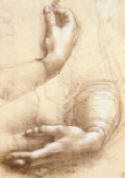BIO211 Weekly Guide #8
DIGESTIVE SYSTEM:
GLANDS, CONTROL, NUTRITION

After completing this laboratory you should be able to:
1) Identify the three paired salivary glands, the pancreas, the liver and the gall bladder in gross anatomical models and histological section, providing the major known functions, products, and control mechanisms for each.
2) Distinguish the cephalic, gastric, and intestinal phases of digestive activity.
3) Name and describe the functions of the major intrinsic hormones of the gastrointestinal system
4) Classify nutrients as carbohydrate, protein, lipid, vitamin, or mineral and describe the basic metabolic pathways, nutritive, and physiological roles of each
Guide to Gross Anatomy Guide to Histology Guide to Physiology
Outline
I. Branched Tubuloacinar Glands
A. Acini
B. Ducts
II. Salivary glands [FAP 24-2; Fig 24-7]
A. Structure
branched tubuloacinar glands
cell types - mucous and serous
B. Saliva - function and makeup
C. 3 pairs of glands - location, cell types, innervation
parotid - serous; NIX
submaxillary (submandibular) - mixed; NVII
sublingual - mixed (mostly mucous); NVII
III. Liver [FAP 24-6; Figs 24-19 to 24-21]
A. Origin - outpocketing of duodenum
B. 4 Lobes - right, left, caudate, quadrate
C. Lobule - basic structural and functional unit
central vein (hepatic vein branch)
hepatic triad
hepatic artery branch
hepatic portal vein branch
bile duct
lymphatic branch
hepatocytes
radiating cords
multiple functions - glycogen storage, detoxification, bile production
sinusoids
Küpffer cells
bile canaliculi
pattern of blood and bile flow
D. Gall bladder
histological features
simple columnar epithelium
highly infolded walls when empty
functions - storage and concentration of bile
action of CCK
E. Route of bile flow
F. Hepatic portal system
organs drained
functions
enterohepatic circulation of bile
IV. Pancreas [FAP 24-6; Fig 24-18]
A. Origin - outpocketings of duodenum
B. Exocrine portion
branched tubuloacinar glands
product - pancreatic juice
digestive enzymes and precursors
alkaline fluid
hormonal control - CCK vs. secretin effects
C. Endocrine portion
islets of Langerhans (discussed in endocrinology lecture)
V. Digestive Control [FAP Spotlight Fig 24-15]
A. Hypothalamic satiety center
B. Autonomic actions
Sympathetic
Parasympathetic
C. Local mechanoreceptors
D. Digestive phases
cephalic
gastric
intestinal
VI. Digestive Hormones [FAP Figs 24-22, 24-23]
A. Histamine
B. Gastin
C. Secretin
D. CCK/Pancreozymogen
E. VIP
F. GIH
G. Enterocrinin
VII. Nutrition [FAP Spotlight Fig 24-27; Table 24-1]
A. Nutrient classes
carbohydrates
digestion
breakdown to simple sugars
cellular respiration - glycolytic and oxidative pathways
glycogenesis, glycogen storage, glyclysis
gluconeogenesis
proteins
proteolysis
essential amino acids
transamination and deamination
protein metabolism, ketone bodies and nitrogenous wastes
ketoacidosis
phenylalanine and phenylketonuria
lipids
cholesterol vs triglycerides
essential fatty acids
emulsification
absorption of lipids
beta-oxidation
lipid metabolism and ketosis
free-fatty acid transport - lipoproteins
lipogenesis and fat storage
vitamins [FAP Table 24-2]
essential organic nutrients in trace concentarations
water-soluble vs. fat-soluble vitamins
roles as metabolic co-factors
minerals [FAP Table 24-2]
essential inorganic nutrients in trace amounts
osmolarity, membrane charge, cofactors
water [FAP Fig 24-28]
B. Diet [review FAP Ch 25 on metabolism and nutrition]
caloric need [FAP Fig 25-7]
basal metabolic rate
thermoregulatory requirements
activity requirements
food groups and "balance"
food pyramid
"myplate"caloric need
Gross Anatomy List
salivary glands
parotid
submaxillary (submandibular)
sublingual
pancreas
pancreatic duct
liver
lobes: right, left, caudate, quadrate
ligaments: coronaries, falciform, laterals,
round (teres)
porta
hepatic artery
hepatic portal vein
hepatic duct
hepatic vein
gall bladder
cystic duct
common bile duct
ampulla of Vater
duodenal papilla
Key: Know location and function of all structures
Guide to Gross Anatomy
[APL Exercise 24-1]
The liver, gall bladder, and pancreas develop as glandular outpocketings of the duodenal lumen. This is reflected in the fact that their ducts join and empty into a limited region of the duodenal wall. The exocrine products of the liver and pancreas, which are delivered via these ducts, facilitate digestion and absorption in the small intestine. In addition the liver and pancreas produce endocine products which are released directly into the blood stream.
a) Identify the following hepatic regions and structures on the models and charts:
[APL Fig 24.14, 24.15]
right lobe proper hepatic artery common bile duct
left lobe hepatic portal vein coronary ligaments
quadrate lobe hepatic duct lateral ligaments
caudate lobe gall bladder falciform ligaments
porta cystic duct round (teres) ligament
hepatic veins
- The ligaments suspending the liver all develop from peritoneal folds, with the notable exception of the round ligament. From what fetal structure does the round ligament develop?
- Study the hepatic porta area. Identify the three tubular structures which enter or leave the liver there - the hepatic duct, the proper hepatic artery, and the hepatic portal vein.
- Note the short hepatic veins and the close relationship of the liver to the inferior vena cava. The hepatic veins are the venous drainage of the liver. What two major vessels supply the liver in the porta region, and what is the nature of the blood in each?
- The gall bladder develops as a diverticulum off of the hepatic duct. Its function is to store bile between meals. How is flow of bile to and from the gall bladder regulated? How does storage in the gall bladder affect the makeup of the bile? What is the function of bile in digestion and absorption in the duodenum? What intestinal hormone stimulates bile release?
- Bile released into the duodenum is largely reabsorbed in the ileum and returned to the liver via the hepatic portal system. This recycling "enterohepatic" circulation greatly reduces the amount of bile that the liver must produce.
b) Identify the pancreas on the charts and models. [APL Fig 24.15]
- The major pancreatic duct joins with the common bile duct to form an enlarged segment called the ampulla of Vater. This drains into the duodenum via an aperture in the duodenal papilla, regulated by the sphincter of Oddi. In some individuals an accessory pancreatic duct empties into the duodenum proximal to the ampulla of Vater.
- What are the major components of the pancreatic juice and what role does each play in digestion? What intestinal hormones stimulate production of each of these components.
Guide to Histology
[APL Exercise 24-2]
The larger glandular organs of the digestive system all originate as outpocketings of the digestive tube. You should be able to identify each of these organs in histological section, briefly describe its major structural features, and list its products and their functions.
a) Salivary Glands
The salivary glands may be identified by the secretory acini (structural and functional unit) and ducts (although note the similarity in histological appearance to the pancreas).
- Identify acini, mucous cells, serous cells, and ducts. Note that this gland is composed primarily of simple cuboidal epithelial tissue which has become highly folded.
- Note that the submandibular gland is a mixed gland, containing both mucous and serous cells. What are the products of each of these cell types? How would you distinguish the submandibular salivary gland from the sublingual and parotid glands?
- Try to locate one of the larger ducts which is lined with stratified cuboidal epithelium.
b) Pancreas [APL Fig 24.20]
The pancreas is histologically very similar to the salivary gland. The exocrine portion is also characterized by secretory acina (structural and functional unit). The pancreas may be histologically distinguished by the presence of the islets of Langerhans.
- Identify the acini and ducts of the exocrine pancreas and the islets of Langerhans of the endocrine pancreas.
- What substances are produced by the acinar cells? What two intestinal hormones regulate production of these substances?
- Compare the pancreas to the salivary gland. What histological criteria could you use to distinguish these?
- What is the difference between exocrine and endocrine glands? We will return to the endocrine function of the pancreas in a later week.
c) Liver [APL Fig 24.21]
The liver may be recognized by the lobular structure (structural and functional unit), with its radiating pattern of hepatocytes.
- Identify lobules, hepatocytes, sinusoids, and central veins. Identify the vessels of the "hepatic triad" - branches of the hepatic duct, hepatic artery, and hepatic portal vein.
- Describe the blood supply to and drainage from the liver. Describe the flow of bile from its production to its release in the duodenum. Try to identify the bile canaliculi under high power.
- Describe the major functions of the hepatocyte. What is the function and fate of each of its products?
- Try to identify the Küpffer cells - the resident macrophages of the liver.
d) Gall Bladder
The gall bladder may be recognized by its characteristic epithelium and the prominent folding of the wall in histological preparations.
- Classify the epithelium of the gall bladder. What are the functions of the gall bladder? What intestinal hormone stimulates bile release?
Guide to Physiology
There is no real physiological component to this week's lab. APL Exercise 24-4 in the lab text is a good review of both the anatomy and physiology of the digestive system.
